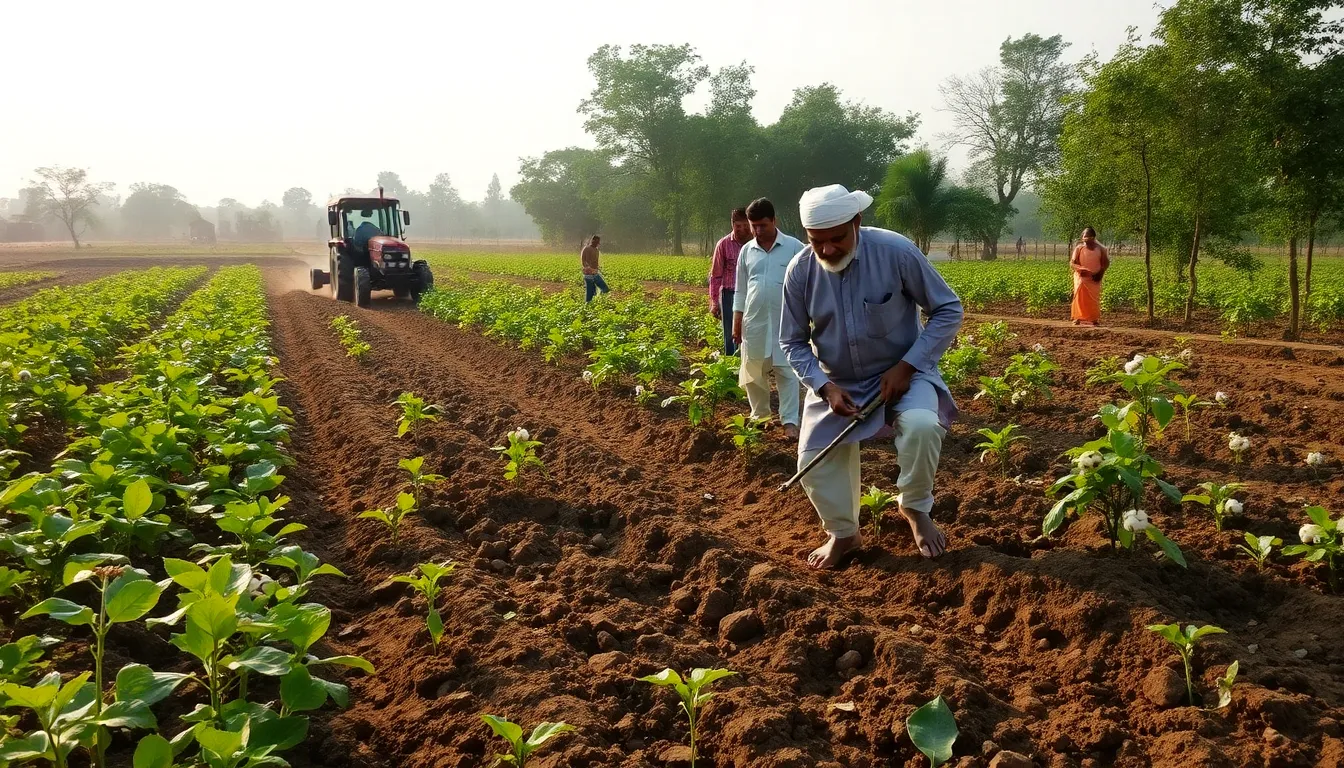Farmers in Gujarat are preparing to sow their Kharif crops, including cotton. The state government is supporting farmers at every step to protect their crops from diseases and pests. The Directorate of Agriculture has provided crucial guidelines for managing cotton crops, especially against sucking pests and armyworms. Here are some important steps farmers should take during planting and early growth stages:
1. **Soil Preparation**: Farmers should plough the soil deeply in summer. This helps control pests like mealybug that may hide in the soil cracks.
2. **Seed Treatment**: Before sowing, treat cotton seeds with Imidacloprid at 7.5 ml per kg of seed or Thiamethoxam at 2.8 ml per kg. This treatment protects young plants from sucking pests.
3. **Weed Control**: Remove weeds such as Galda, Wild Okra, and Congress grass from the field. These can harbor pests that threaten cotton plants.
4. **Increase Natural Enemies**: To boost natural enemies of pests, plant a variety of flowering plants like Cassia, Senna, and Maize in a 0.20-hectare area. This helps create a balanced ecosystem.
5. **Intercropping**: Grow maize and sorghum as trap crops. These crops attract pests like ladybird beetles, which can help control pest populations naturally.
6. **Biological Control**: For effective management of armyworms, release 10,000 eggs or larvae of natural enemies like Chrysopa per hectare twice during the growing season.
7. **Trap Crops for Pests**: Around the cotton field, plant rows of maize or a mix of maize and cotton. This acts as a barrier against pests.
8. **Integrated Management of Leaf and Pod Feeding Caterpillars**: After harvesting, collect and destroy any fallen flowers, pods, and leaves in the cotton field to reduce pest numbers.
9. **Crop Rotation**: Practice crop rotation and deep ploughing every two years. Sow early maturing, pest-resistant Bt cotton seeds between June 15 and July 15.
10. **Seed Mixtures**: According to government guidelines, seed companies should mix 5-10% non-Bt or refuge seeds in 475 grams of Bt cotton seed packets. This helps in pest resistance.
11. **Trap Crops Again**: Use maize, sorghum, or yellow mustard as trap crops in the same way to control pests effectively.
12. **Natural Enemies Maintenance**: Foster a habitat for beneficial insects by intercropping maize or sorghum.
13. **Pest Control Strategies**: To control the cabbage armyworm, plant okra between cotton rows. This natural barrier can deter pests from affecting the cotton plants.
14. **Chemical Usage**: Always follow the recommended guidelines on pesticide labels. This ensures the safe use of chemicals and maintains crop health.
By following these guidelines, farmers can safeguard their cotton crops and ensure a successful harvest. The Directorate of Agriculture in Gujarat remains committed to providing continuous support and information to farmers to enhance productivity and income. Keeping crops healthy is essential for the livelihood of many in the region, and with proper management, farmers can achieve better yields and profits.


Leave a Reply